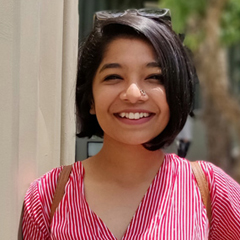Aleesa: The Malabar sibling of the mighty Haleem

A specialty for Iftar, Aleesa is the Malabar counterpart of Haleem.
A specialty for Iftar, Aleesa is the Malabar counterpart of Haleem.
A specialty for Iftar, Aleesa is the Malabar counterpart of Haleem.
The story of how Harees travelled to parts of Kashmir and Hyderabad and took the form of Haleem is quite popular, while Aleesa/ Alsa, their Malabar counterpart hasn't received the fame it deserves, yet.
Describing the texture of this wholesome wheat-meat goodness that finds its place during Iftar (the meal eaten after sunset during the holy month of Ramzan) or served right before the main course (usually Biryani) at Muslim weddings and festivities in North Kerala, as ‘porridge’, wouldn’t do justice to the uniqueness of Aleesa. Before we get into the delicate details of the dish, we will have to know what makes it different from Haleem and Harees.
Haleem is a mixture of boiled coarsely-ground wheat along with meat, and seasoned, just like its ancestor Harees which has an Arabic origin. The ratio of meat to wheat and the addition of indigenous spices and ingredients is what makes them different from each other. Harees is an equal blend (usually chicken) whereas Haleem is heavy on the meat with a ratio of 3:1, 3 parts of meat (usually mutton) to 1 part of wheat (and black gram/ urad dal). How Harees got named Haleem and then eventually Aleesa, has multiple stories, but we have to agree that all of the names have a similar ring to it.
The basic structure of the dish remains the same, the texture, consistency and key ingredients remain untouched, but Haleem has more spices than Harees, Aleesa sees the addition of raisins and is served with a bit of sugar! Yes, you read it right, a savoury meat preparation served with sugar. It might sound bizarre to some but tastes delicious. Now it makes more sense as to how the ‘Pazhampori – Beef’ combination got instantly accepted across the state, Kerala has a history of being attracted to sweet n savoury blends.
While we browse the internet for the recipe of Aleesa, one might find variations of it with the addition of coconut milk. When we try and ask a few of our friends from North Kerala we will get multiple recipes with small tweaks that make each recipe a customised one. If we try and curate a basic recipe eliminating all the customisations, it will have, coarsely ground wheat that is soaked for a minimum of four hours before it can be cooked together with mutton/ chicken, garlic pods, and whole spices (mainly cinnamon, cardamom and star anise) in what is considered to be the pressure bomb of the house, the pressure cooker. Once cooked, remove the bones and blend in the cooked meat to the dish. Temper it with a mix of ghee (clarified butter), shallots/ small onions, cashew nuts and raisins. Serve with a helping of ghee and sugar.
Notice how the browned onions that are topped on Haleem transitioned into shallots (sambar onion) as it reached Kerala? That is the beauty of food culture, it doesn’t have barriers! No matter what dish crosses the border, it eventually merges in and takes a new form. To learn about Aleesa in Kerala, we took an imaginary trip to the states that were ruled by the Mughals and also to the Arabian Peninsula. It is indeed true that food is a gateway to culture.
Information courtesy: Muhammed Aflahe Iqbal
(The author is a food blogger and culinary enthusiast.)

